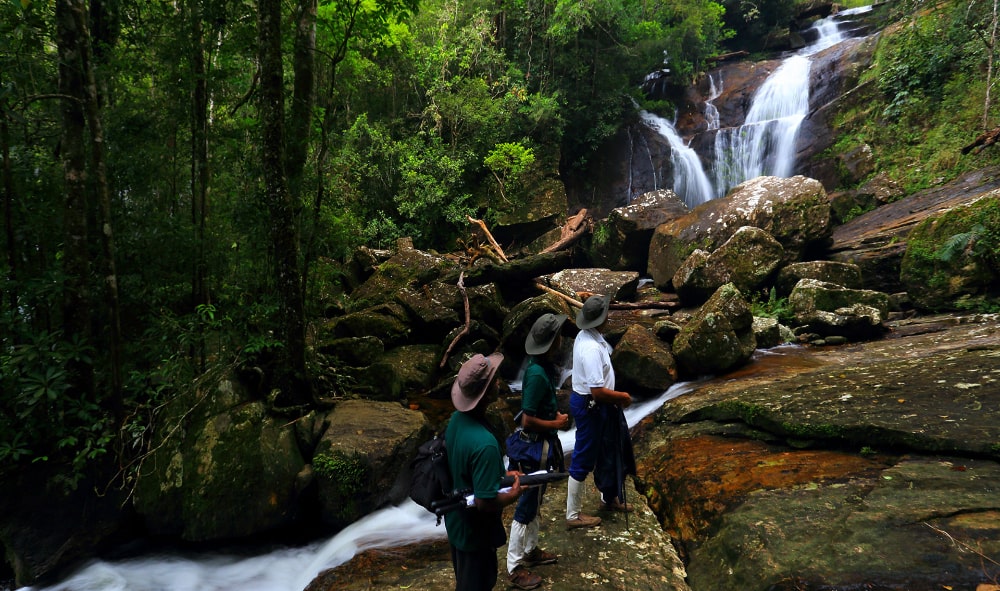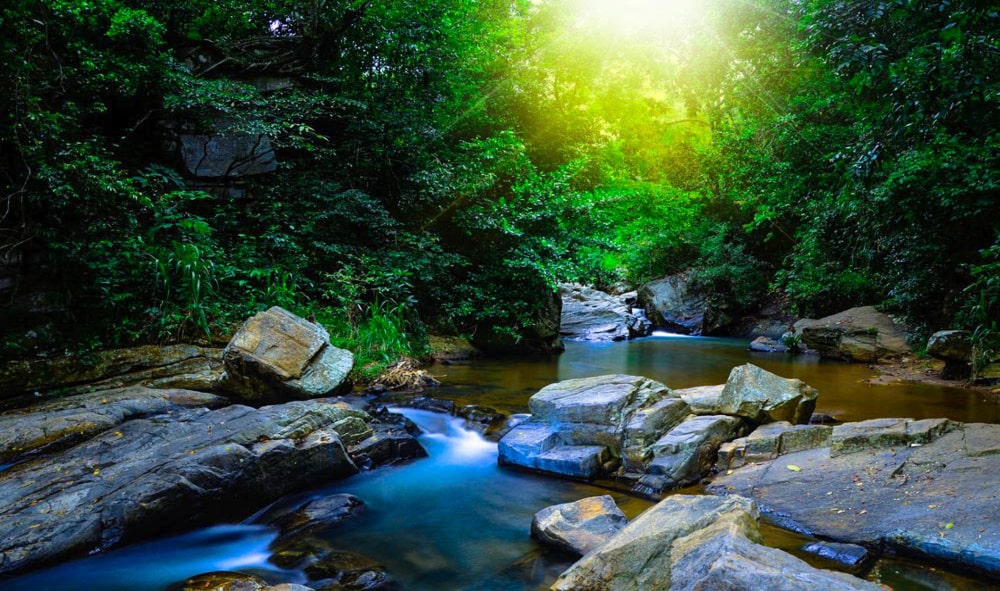Sinharaja Rainforest
Sum up
The last surviving stretch of virgin rainforest in Sri Lanka, Sinharaja is moist and muggy, a murky and mysterious land of exotic colours and wonderful sounds.
Duration: 3 hours
Best Time: Year-round
Additional Information
Trekking here is a truly enriching experience: accompanied by nothing but the sound of gushing waterfalls, gurgling streams and rustling leaves, look out for exotic birds, vibrant reptiles and eye-catching butterflies moving through the trees as the natural surroundings stir the senses.
73 native species have so far been identified in Sinharaja Rainforest, including birds, butterflies, fish, mammals, reptiles and amphibians, making it a world-famous hotspot for biodiversity.
Located in the southwest corner of Sri Lanka, 40km inland from the historic city of Galle, Sinharaja straddles a series of mountains and ridges in the country’s wet zone and contains a number of streams, waterfalls and fresh-water springs which flow into the Gin Ganga on the southern boundary and Kalu Ganga to the north.
The Sinharaja region has long played an important role in the cultural heritage of Sri Lanka: folklorists believe that the name of the forest, which literally means ‘lion king’, suggests its significance as the primary home of the legendary lion of Sri Lanka. Other less romantic historians believe that the name refers to Sinharaja’s role as the ‘king-sized’ or ‘royal’ forest of the Sinhalese people, at a time when over 100,000 hectares of wet evergreen jungle covered the south-western hills and lowlands of Sri Lanka.
Since that time, with much of the land having been cultivated by both colonial settlers and local inhabitants for tea estates and other forms of enterprise, the thin sliver of forest (21km long and 3.7km wide) that remains is but a glimpse of its former glory. Only relatively recently was the urgency of conserving this precious segment of land seriously recognised when it was declared a Biosphere Reserve in 1976. In 1989 UNESCO seconded this move and made it a World Heritage Site in 1989.
Popular Activities
Sinharaja Rainforest Sum up The last surviving stretch of virgin rainforest in Sri Lanka, Sinharaja is moist and muggy, a murky and …
Sri Lanka canoe expedition Sum up Canoe down the Mahaweli River and spend your nights camping under the stars during this magical three-night expedition. …
White-Water Rafting and Canoeing Sum up Experience an exciting rafting adventure in a jungle paradise. The Kitulgala-Kelani Forest Reserve, which sits on …
Kitulgala-Kelani Forest Reserve Sum up The Kitulgala-Kelani Forest Reserve is the hub of adventure activities in Sri Lanka. Try canoeing, white-water rafting, trekking, …
Canyoning in Kitulgala Sum up Spend three nights at Borderlands in Kitulgala, a remote area on the western edge of Sri Lanka’s …












